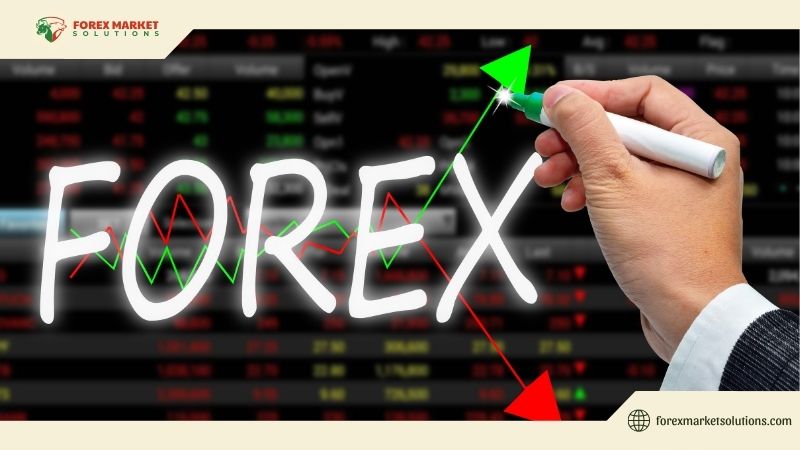The Forex market is a vast and intricate landscape where precision and strategy often determine success. Among the many tools available to traders, the Fibonacci sequence stands out as a powerful method for analyzing price movements and predicting potential turning points. Understanding how to use Fibonacci in Forex trading can elevate your ability to identify key levels, time your entries and exits, and manage risk effectively. Rooted in mathematical principles, this tool has become a staple for traders seeking to navigate the market’s ups and downs with confidence. This comprehensive guide will walk you through the essentials of applying Fibonacci in your trading, offering practical insights to enhance your skills.
Fibonacci tools are prized for their versatility and reliability, drawing on a sequence discovered centuries ago by Italian mathematician Leonardo of Pisa. In Forex, these tools help traders map out support and resistance zones, making sense of price action in both trending and ranging markets. Whether you’re a beginner looking to refine your approach or an experienced trader aiming to sharpen your edge, learning how to use Fibonacci in Forex trading provides a structured way to interpret the market’s behavior. Let’s explore how this timeless technique can become a cornerstone of your trading strategy.

The Basics of Fibonacci in Trading
To grasp the power of Fibonacci in Forex, it’s helpful to start with its foundation. The Fibonacci sequence begins with 0 and 1, with each subsequent number being the sum of the two before it: 0, 1, 1, 2, 3, 5, 8, 13, and so on. From this sequence, key ratios—such as 23.6%, 38.2%, 50%, 61.8%, and 100%—are derived and applied to trading charts. These ratios, often called retracement levels, reflect natural proportions found in nature and human behavior, which traders believe influence market psychology.
In Forex, the most common Fibonacci tool is the retracement, used to identify potential reversal points after a price move. For example, after a strong uptrend, prices often pull back to one of these levels before resuming their direction. The 61.8% level, known as the “golden ratio,” is particularly significant, frequently acting as a strong support or resistance zone. Beyond retracement, Fibonacci extensions (like 161.8% or 261.8%) help predict where prices might head after breaking past a previous high or low. Understanding these basics lays the groundwork for applying the tool effectively.
Setting Up Fibonacci on Your Charts
Before diving into practical applications, you need to know how to set up Fibonacci tools on your trading platform. Most platforms, such as MetaTrader 4 or 5, include built-in Fibonacci retracement and extension tools, accessible with a few clicks. To apply retracement, identify a significant price swing—either an uptrend (low to high) or a downtrend (high to low). Select the tool, click the swing’s starting point, and drag it to the end point. The platform will automatically plot the key levels across the chart.
For an uptrend, the swing low is your starting point (0%), and the swing high is 100%. The retracement levels—23.6%, 38.2%, 50%, and 61.8%—appear below the high, showing where the price might retrace before continuing upward. In a downtrend, reverse the process: the swing high is 0%, and the swing low is 100%, with levels indicating potential pullback zones. Extensions work similarly but extend beyond the swing to forecast future targets. Practicing this setup on historical charts builds familiarity, preparing you to use it in live trading.

How to Use Fibonacci in Forex Trading Effectively
Once your chart is ready, the real question becomes how to use Fibonacci in Forex trading to make informed decisions. The key lies in combining Fibonacci levels with other technical analysis methods to confirm signals and refine your strategy.
In trending markets, Fibonacci retracement is invaluable for finding entry points. Suppose the EUR/USD pair surges from 1.1000 to 1.1200, then begins to pull back. Plotting the retracement from the low (1.1000) to the high (1.1200) reveals levels like 1.1148 (38.2%) and 1.1124 (50%). If the price pauses or reverses near one of these zones—especially with additional confirmation like a candlestick pattern or support from a moving average—it’s a potential spot to enter a buy trade, anticipating the uptrend’s continuation. This approach helps you buy on dips rather than chasing the market at its peak.
In ranging markets, Fibonacci levels act as dynamic support and resistance. Imagine the GBP/USD oscillating between 1.3000 and 1.3200. Applying retracement to this range highlights midpoints like 1.3100 (50%), where the price might stall or reverse. Traders can use these levels to scalp or set profit targets, selling near resistance and buying near support. The beauty of Fibonacci lies in its ability to adapt to different market conditions, offering clarity amid the noise.
Fibonacci extensions shine when predicting profit targets. After a breakout above a swing high, say 1.1200 in the earlier EUR/USD example, plotting extensions from the prior low (1.1000) to the high (1.1200) projects levels like 1.1324 (61.8%) or 1.1448 (100%). These targets guide where to take profits or adjust stops, maximizing gains while managing risk. Pairing extensions with trendlines or momentum indicators like the RSI strengthens your confidence in these projections.
Enhancing Fibonacci with Confluence
While Fibonacci is powerful on its own, its accuracy improves when combined with other tools, a concept known as confluence. Confluence occurs when multiple indicators align at a Fibonacci level, increasing its significance. For instance, if the 61.8% retracement in an uptrend coincides with a 200-period moving average and a bullish engulfing candle, the likelihood of a reversal rises. This overlap validates the level, giving you a stronger signal to act.
Support and resistance zones from previous price action also enhance Fibonacci’s effectiveness. If a 38.2% level aligns with a historical pivot point where the price frequently reversed, it’s a hotspot to watch. Adding volume analysis can further refine your approach—high volume at a Fibonacci level suggests strong market interest, reinforcing its role as a turning point. By seeking confluence, you filter out weaker signals and focus on high-probability setups.

Common Mistakes to Avoid
Even with a solid grasp of how to use Fibonacci in Forex trading, pitfalls can undermine your efforts. One frequent error is forcing Fibonacci levels onto the chart without a clear swing. Randomly selecting highs and lows distorts the tool’s accuracy, leading to unreliable levels. Always base your plots on significant price movements with clear momentum behind them.
Another misstep is relying solely on Fibonacci without confirmation. While the levels often hold, the market doesn’t always respect them perfectly. Acting on a retracement level without additional evidence risks premature entries or exits. Patience is key—wait for the price to react at a level and show signs of reversal or continuation before committing.
Overcomplicating your analysis is also a trap. Using too many Fibonacci plots on one chart creates clutter, confusing rather than clarifying your decisions. Stick to one or two major swings per timeframe, keeping your focus sharp and actionable.
Practice Makes Perfect
Like any skill, mastering Fibonacci requires practice. Start with a demo account, applying retracement and extension tools to historical data. Test how prices interact with these levels across different pairs and timeframes, noting where they hold or fail. Over time, you’ll develop an intuitive sense of which levels matter most in specific market conditions, refining your ability to trade live.
Reviewing your trades is equally important. After each session, assess whether your Fibonacci-based entries and exits worked as planned. Adjust your approach based on what you learn, gradually building a strategy that suits your style and goals.

Unlock Fibonacci’s Potential
Understanding how to use Fibonacci in Forex trading opens a world of possibilities, blending mathematical precision with market insight. By plotting retracement and extension levels, seeking confluence, and avoiding common errors, you can harness this tool to improve your timing, target profits, and manage risk. The Forex market rewards those who combine discipline with the right techniques, and Fibonacci offers a proven path to both.
Ready to take your trading to the next level? Dive deeper into Fibonacci and other strategies by following Forex Market Solutions — your trusted resource for Forex mastery.
